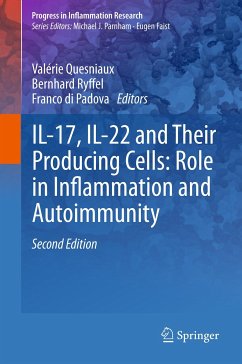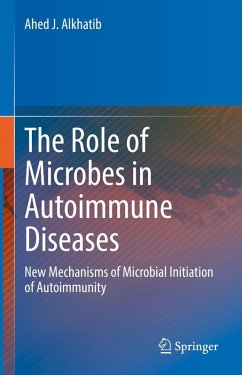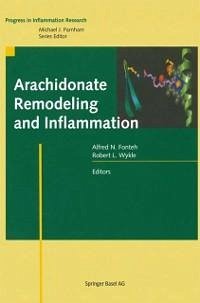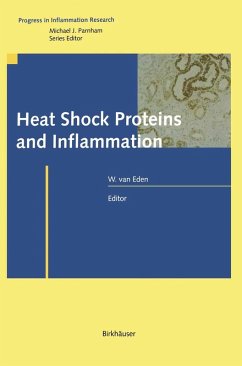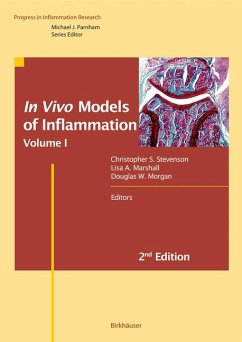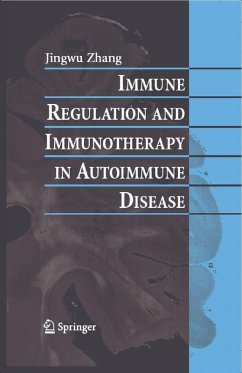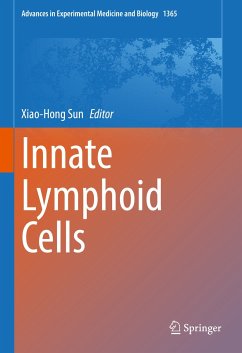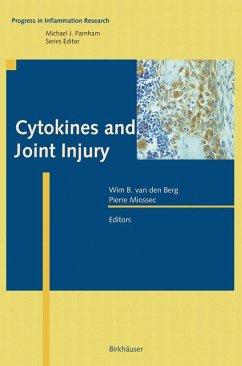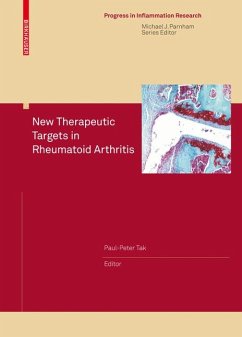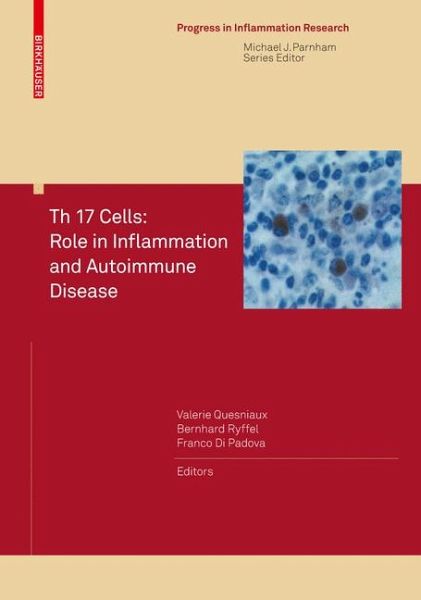
Th 17 Cells: Role in Inflammation and Autoimmune Disease (eBook, PDF)

PAYBACK Punkte
52 °P sammeln!
The IL-17 cytokines represent a novel family of cytokines, which defines a new effector T cell, the Th17 cell, and extend the Th1-Th2 paradigm. Th17 cells in part co-express at least IL-17A and IL-17F, IL-21 and IL-22. IL-17 A/F are produced by T cells ( and ), iNKT cells, and possibly neutrophils, dendritic cells and Paneth cells. The regulation of IL-17 family member's expression, and the identification of effector mechanisms are an area of intense current research. Recognized regulators of IL-17A expression include the nuclear receptor ROR t, proinflammatory cyt- ines such as IL-1, IL-6 wit...
The IL-17 cytokines represent a novel family of cytokines, which defines a new effector T cell, the Th17 cell, and extend the Th1-Th2 paradigm. Th17 cells in part co-express at least IL-17A and IL-17F, IL-21 and IL-22. IL-17 A/F are produced by T cells ( and ), iNKT cells, and possibly neutrophils, dendritic cells and Paneth cells. The regulation of IL-17 family member's expression, and the identification of effector mechanisms are an area of intense current research. Recognized regulators of IL-17A expression include the nuclear receptor ROR t, proinflammatory cyt- ines such as IL-1, IL-6 with TGF- , IL-21, IL-23 IL-25 in the absence of IFN- and IL-4, which are discussed. Recent data suggest that IL-17A may have a dual fu- tion - pro-inflammatory and anti-inflammatory- suggesting that IL-17A may also contribute to terminate inflammation. Further, a reciprocal regulation of Th17 and regulatory T cells including the role of retinoic acid and TGF- is discussed. The discovery that patients with rheumatoid arthritis, allergic disorders, psor- sis and inflammatory bowel disease express IL-17A generated interest in the medical community and instigated a flurry of experimental research on the potential role of Th17 in inflammatory diseases. Experimental studies confirmed that IL-17A is induced and is critical for the development of allergic lung inflammation, arthritis, bacterial sepsis, experimental allergic encephalomyelitis and myocarditis, as well as other inflammatory con- tions including organ transplantation. The role of IL-17F and IL-22 is still poorly defined and is only slowly emerging.
Dieser Download kann aus rechtlichen Gründen nur mit Rechnungsadresse in A, B, BG, CY, CZ, D, DK, EW, E, FIN, F, GR, HR, H, IRL, I, LT, L, LR, M, NL, PL, P, R, S, SLO, SK ausgeliefert werden.



